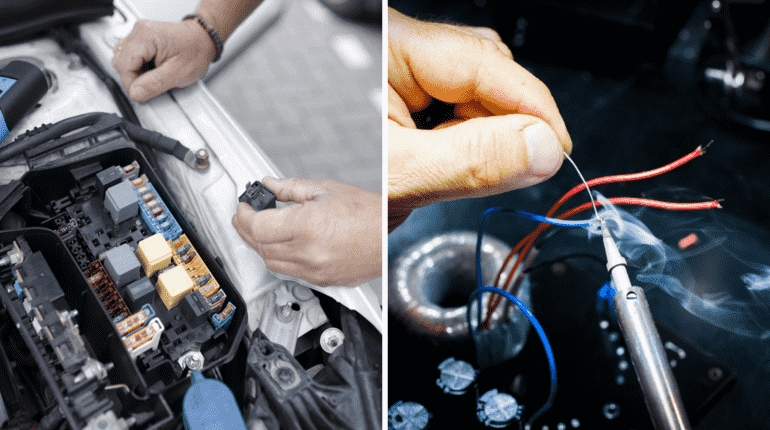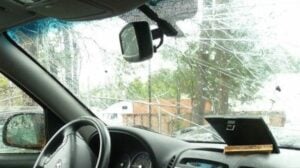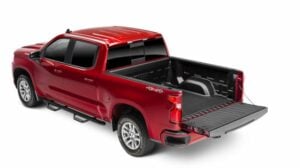What is ABS or Anti-lock braking system?
ABS prevents the wheels from locking when you apply the brakes. When your car’s wheels do not lock during braking, it helps you steer the vehicle safely while applying the brakes. It also reduces the braking distance.
Anti-lock brake system (ABS) has become a vital safety feature in all modern cars. In 2013, ABS became a necessary and required equipment in all cars and other vehicles in the United States. This system works with conventional brakes.
It’s not an entirely new braking system; it is only an added feature in your vehicle’s brake system. ABS is advertised as a system that helps mitigate accidents. In this article, we will explain how this system works, the main components, the benefits of the system, and everything you need to know about ABS. Read more automotive news on fordonsteknik
How does the ABS work
In the anti-lock braking system, the car’s wheel speed is monitored by the wheel speed sensors. If the speed of any wheel is lower than the threshold speed, the sensor sends a message to the controller. The controller is also referred to as ECU (electric control unit). ECU applies brakes 15 times per second. This pumping of brakes prevents the wheel from locking. Therefore, it grants drivers more control over the steering of vehicles while applying brakes.
In the event of a sudden stop, there was a possibility that one or more of your vehicle’s wheels would lock up. When the wheels are locked, the wheels of the vehicle stop rotating, causing the car to slide. When the car is sliding, the driver cannot steer the vehicle properly, which can end up in an accident. For this reason, drivers were taught to pump the brakes in heavy braking situations. Read more about brakes.
According to the National Highway Traffic Safety Administration (NHTSA)
“ABS works with your regular braking system by automatically pumping them. In vehicles not equipped with ABS, the driver has to pump the brakes manually to prevent wheel lockup. In vehicles equipped with ABS, your foot should remain firmly planted on the brake pedal, while ABS pumps the brakes for you so you can concentrate on steering to safety.”
What are the main components of the ABS?
There are four main components of the ABS. The wheel speed sensors, valves, pumps, and controller (ECU):
Speed sensor (Encoders)
A wheel speed sensor is used to determine the acceleration or deceleration of the wheel. The anti-lock braking system must know when the wheel is locked to make a decision. So this information is provided by the wheel speed sensor. These sensors are attached to each wheel or in the differential.
How does the wheel speed sensor work?
The rotation of the wheel or differential in the speed induces a magnetic field around the sensor. The fluctuation of this magnetic field creates the signal. That signal provides information to the controller for making decisions.
Valve
The second component of the anti-lock braking system is the valve. The valve that carries braking fluid is present in the braking line. The components that perform the braking function
include master cylinder, brake calipers, brake hoses, braking fluid, and brake lines.
The valve performs two functions: it allows or blocks the braking fluid from reaching the braking line. When the wheels lock up, braking fluid will reach the braking line and prevent skidding.
The valves can get clogged due to various reasons. When a valve is blocked, it is unable to open, close, or change position. So, in that case, ECU would be unable to control the pressure supplied to the brakes.
Pumps
Pumps are filled with hydraulic fluid or braking fluid that applies pressure to the brakes. Since the valve is able to release pressure, the pump gets the pressure back up when it is needed.
Controller or electronic control unit (ECU)
The controller is like the brain of an ABS. It receives the signals from the sensor, and on the basis of that signal, the controller activates the ABS modulator, which actuates the braking valves on and off.
Classification of anti-lock braking system
The number of valves and wheel speed sensors can vary in an anti-lock braking system. There are five types of anti-lock braking systems.
| ABS types | Description |
| Four-channel, four-sensor ABS | Separate speed sensor for each wheel and separate valve for each wheel |
| Three-channel, four-sensor ABS | Separate speed sensor for all four wheels, a valve for each front wheel, but only one valve for both rear wheels |
| Three-channel, three-sensor ABS | A valve and a sensor for each front wheel, a valve and a sensor for both the rear wheels |
| Two-channel, four-sensor ABS | The sensor is located on each wheel, with a valve for both front wheels and a valve for both rear wheels. |
| One-channel, one-sensor ABS | A sensor and a valve for both rear wheels |
Advantages of anti-lock braking systems
- Reduces the braking distance
- Prevents locking of wheels while braking
- Reduces wearing of brake pads and brake discs
- Performs across different weather conditions
- Improves the tire’s longevity and reduces wear
- Allows you to steer the vehicle in case of heavy braking
- Allows you to full brake in case of an emergency
- On surfaces like gravel, sand, and deep snow, ABS tends to increase the braking distance
- Reduces the risk of vehicle crashing
Limitation of anti-lock braking systems
- Braking distance depends upon the type of surface
- ABS systems are costly to maintain
ABS does provide a sense of security, but relying heavily on ABS systems could be dangerous. Safe driving practices are still needed with an anti-lock braking system.
The study was conducted in Munich, where half of the taxicab fleet was equipped with ABS while the other half had conventional brakes. The crash rate was essentially the same for both types of cabs. The drivers with the ABS drove more recklessly because they thought that ABS would take care of them.
Anti-lock braking system problems & troubleshooting
The anti-lock brake system (ABS) control module has a warning light to notify the driver about a malfunction in the braking system. Common ABS problems occur when sensors become contaminated with debris or metal shaving. ABS relies on a properly operating conventional brake system.
When the car starts skidding, the ABS pumps braking fluid, which prevents skidding and allows the driver to maintain steering control. If you are driving on wet roads, you can’t afford the failure of your ABS controller.
Malfunctioning ABS light
The ABS light turns on when there is a problem in the braking system. Every time you turn on the ignition, the ABS controller powers on to self-test. If the controller doesn’t get sufficient data, the hydraulic pump or valve isn’t responding; the ABS light will be illuminated.
The light itself could malfunction. If the overall braking system is working correctly, but the light is continuously illuminating on the dashboard, it is a clear indication that the light isn’t working correctly.
Malfunctioning ABS wheel speed sensor
ABS wheel speed sensors located on the brakes could become contaminated with debris or metal shaving. This results in the malfunctioning of ABS sensors. Malfunctioning error codes will be sent to the main computer, and this will illuminate the ABS warning light on the dashboard. This problem could easily be solved by cleaning. If cleaning is not possible, then replacing the sensor is the only option.
In deteriorating conditions or severe brake system neglect, brake fluid can become contaminated, and the hydraulic control unit fails to function.
Faulty or damaged wiring
The signals traveling down the wires of the ABS are only millivolts, and any resistance in those wires significantly obstructs the functioning of the cables. In order to identify any problems with the wires, you can measure resistance across the wheel speed sensor using a multimeter.
This wiring of the ABS is vulnerable to damage, wear, and tears. The wiring can also get disconnected due to vehicle vibration. Physically checking all the wiring is suitable for initial troubleshooting. Damaged wiring would also illuminate the ABS warning light on the dashboard. So you can easily check whether it is due to wiring or not.
Malfunctioning ABS controller
The controller is a computer that receives signals from the ABS wheel speed sensor, wiring, hydraulic pumps, and brake fluid. The controller directs the hydraulic valve to release some brake fluid pressure to the wheel in order to let it rotate again. Consequently, malfunction spreads across the entire controller. Needless to say, that would also be disastrous.
So, four significant problems could happen in the ABS brake system. Once the fault is established, the repair is much easier. To find the fault in the ABS, it can be scanned easily in a repair shop. The repair would cost you around 100$ to 150$.






